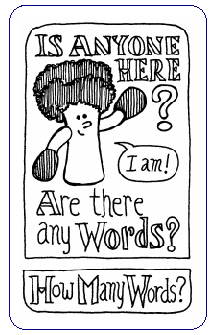 Defining Suits
for Morgan's
Tarot
Defining Suits
for Morgan's
TarotA Game Design in Progress
By Andrew Looney, 9/7/0
 Defining Suits
for Morgan's
Tarot
Defining Suits
for Morgan's
Tarot
A Game Design in Progress
By Andrew Looney,
9/7/0
With the production of Chrononauts finally completed, my mind has naturally begun to wander towards my next game design project. Given that Kristin says I'm not allowed to design anything that requires custom components right now, I've been mainly thinking about pyramids; but this week I had a different inspiration: Developing a way of playing games with the Morgan's Tarot.
Morgan's Tarot is a wonderfully whimsical, totally strange counter-culture oriented tarot deck, created by Morgan Robbins and illustrated by Darshan Chorpash Zenith . I love it, but I also hate it, since it's almost totally worthless, at least to one who doesn't have any interest in using tarot cards for divination. Years ago, John Cooper solved this overall problem with tarot decks by inventing Zarcana, but the Morgan's Tarot stands out as the main example of a tarot deck that you simply cannot adapt to Zarcana, flexible though Zarcana is. There are no suits or card numbers on any of the cards, they're all just odd messages with nifty B&W line drawings. If you haven't seen it, the whole deck is online for you to explore, thanks to Lookit the Cat Producuctions. (And if you'd like to buy a copy, we're planning on adding it to our online store...)
Anyway, for a long time I've been wanting to think of a way of making this cool deck of cards a little more useful, but the total lack of structure in this deck makes it impossible to use for traditional game playing. Or does it?
Actually, there's more structure here than at first meets the eye. In fact, I have devised a method of classifying these cards into 5 suits, each with a rank or value. The next step is to use this structure to devise a Morgan Tarot game, but this discovery is cool enough on its own to be worth documenting, because now it becomes possible to begin translating regular card games into Morgan Tarot versions, at least to a certain extent.
Anyway, here's how it works. Each card in the MT features a large upper panel, and a thin lower panel. The upper panel contains some combination of words and pictures, while the lower panel always contains between 0 and 5 words.
To determine the card's rank/value, just count the number of words in the lower panel. A secondary ranking can also be calculated, if necessary, by adding up the total number of letters in all the words in the lower panel.
Determining the card's suit is only a little trickier. Study the contents of the upper panel and ask yourself the following questions: Are there any words? Are there any pictures? Are there any people (or other beings) in the picture? Depending on the answers you give, the card can be classified as one of the following:
Cosmic Advisors: A card with a picture of a being, with words
Silent Visitors: A card with a picture of a being, but no words
Empty Places: A card with a picture, but no words and no beings
Missing Messengers: A card with a picture and words, but no beings
Voices: A card with no picture, but usually with words
Note that strange creatures, insects, pigs and fishes, and even the robot are all considered beings, but plants and body parts are not. Also, numbers, symbols, and icons are not counted as words. And the card with two completely blank panels is considered a Voice, with a special name: The Quiet Voice.
Pictures are considered more important that words (1 picture = 1000 words) and a card with several beings depicted is more valuable than one with just one being. For whatever that's worth.
Given this, you can play a strange version of crazy eights, or a basic trick taking game, or even, I'm hoping, a really wild version of Temple. But I have more in mind... my next step is to use this structure for a game tailored to the cards, something hopefully involving a quest for enlightenment and answers to the 5 question-asking cards, namely:
Stay tuned for more on this game as it develops...